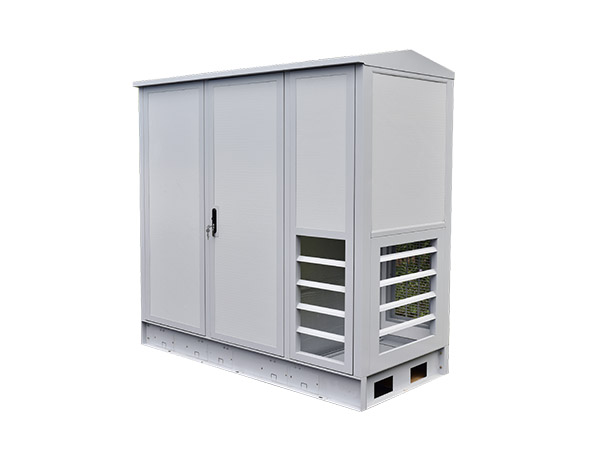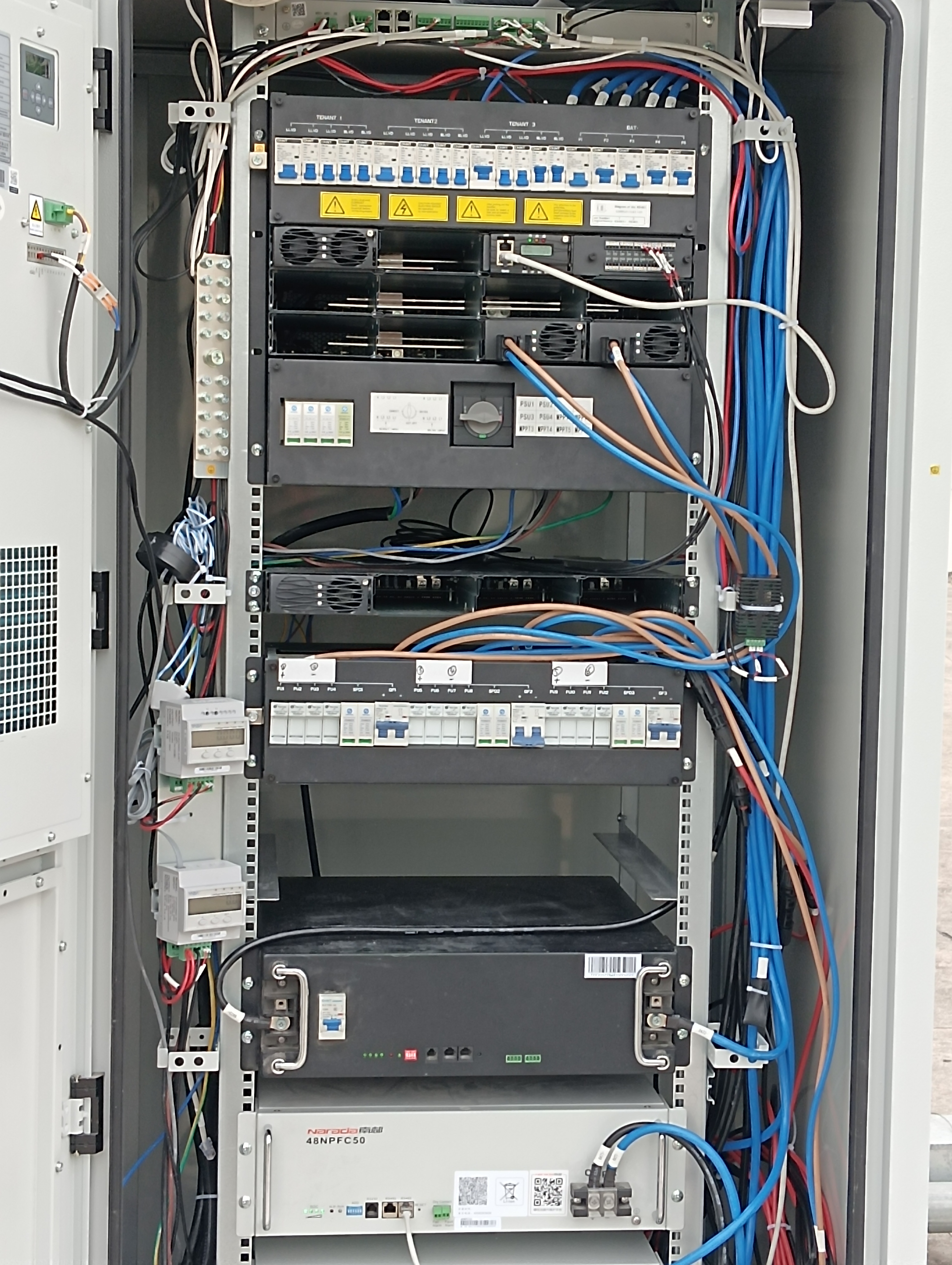ESTEL's Advice on Choosing Outdoor Battery Cabinets for Any Weather

When you rely on batteries to power essential systems, protecting them from harsh weather and environmental challenges becomes a top priority. An outdoor battery cabinet acts as your first line of defense, shielding batteries from extreme heat, freezing temperatures, or heavy rain. This protection isn’t just about convenience—it’s about ensuring reliable performance when it matters most.
Did you know that improved outdoor enclosures have led to a 98% drop in battery failure rates between 2018 and 2024? That’s how impactful the right solution can be. With ESTEL’s expertise, you get cabinets designed to handle the toughest conditions, all while keeping your batteries safe and efficient.
Key Takeaways
Outdoor battery cabinets keep batteries safe from bad weather all year.
Buying a good cabinet can lower repair costs by 40% and make equipment last 3-5 years longer.
Picking the right size and materials helps with airflow and strength.
Choose cabinets that resist fire and water to avoid damage.
Custom designs let you adjust the cabinet to fit your needs better.
Why an Outdoor Battery Cabinet is Essential

Protection Against Weather Extremes
When it comes to outdoor battery storage, weatherproofing and protection are non-negotiable. Extreme weather conditions like heavy rain, scorching heat, and freezing temperatures can wreak havoc on your batteries. A weatherproof outdoor battery cabinet shields your batteries from these challenges, ensuring they stay safe and functional year-round.
Did you know that improper lithium battery storage has caused over 660 fires in major cities over six years? These incidents highlight the importance of secure outdoor electrical enclosures. High-quality designs have reduced battery failure rates by 98% between 2018 and 2024, proving their effectiveness in safeguarding against weather-related risks.
Enhancing Battery Longevity and Performance
A well-designed outdoor electrical enclosure doesn’t just protect your batteries—it boosts their performance and extends their lifespan. Integrated designs enhance energy density, protection levels, and battery consistency, which translates to fewer replacements and better reliability.
Think of it this way: a durable battery box acts like a protective shield, keeping your batteries safe from thermal burns, electric shocks, and chemical leaks. Proper storage prevents incidents like explosions caused by gas buildup, ensuring your batteries perform optimally even in harsh outdoor conditions.
Reducing Maintenance Costs and Downtime
Investing in a high-quality outdoor battery cabinet can save you money in the long run. Reduced maintenance frequency leads to over 40% savings in annual operation costs. Plus, extending equipment life by an average of 3-5 years means fewer replacements and less downtime.
Evidence Type | Value |
|---|---|
Reduced maintenance frequency | More than 40% reduction in annual operation and maintenance costs |
Equipment life extension | Average of 3-5 years |
Downtime losses | Decreased by about 75% |
By minimizing downtime, you can focus on what matters most—keeping your systems running smoothly without interruptions. A weatherproof outdoor electrical enclosure is more than just a storage solution; it’s a smart investment in durability, safety, and performance.
Assessing Your Outdoor Electrical Enclosure Needs
Determining the Right Size and Capacity
Choosing the right size for your battery box is more than just a matter of fitting your equipment inside. It’s about ensuring proper airflow, adequate ventilation, and cooling to prevent overheating. Oversized enclosures can improve airflow, but they also require careful planning to avoid structural issues.
When assessing size, ask yourself: What will the enclosure contain? How much space do you have for installation? Standard sizes are available, but customization might be necessary if your project has unique requirements.
Here’s a quick checklist to help you:
Match the enclosure size to the heat dissipation needs of your equipment.
Consider the number of wiring holes and mounting options required.
Include any additional accessories or components for functionality.
By taking these factors into account, you’ll ensure your outdoor electrical enclosure supports optimal battery performance while maintaining durability and safety.
Evaluating Environmental and Installation Factors
Outdoor environments can be unpredictable, and your enclosure needs to handle everything from heavy rain to extreme temperatures. Environmental factors like sunlight, salty air, and dust can affect the durability and protection of your enclosure.
To make the right choice, consider the following:
Weather conditions: Extreme cold reduces battery capacity, while high temperatures can lead to overheating if ventilation isn’t adequate.
Location-specific challenges: Coastal areas require corrosion-resistant materials, while flood-prone zones need enclosures with NEMA 6 ratings for water protection.
NEMA Rating | Environmental Protection | Application Example |
|---|---|---|
NEMA 6 | Protection against temporary submersion in water | Flood-prone areas |
NEMA 12 | Blocks solid contaminants like dust | Industrial settings |
NEMA 4X | Enhanced corrosion resistance against salty air | Coastal areas |
By evaluating these factors, you’ll ensure your outdoor electrical enclosure performs reliably in any environment.
Planning for Future Expansion
Your current needs might be clear, but what about the future? Planning for expansion ensures your outdoor battery cabinet can adapt to new technologies and increased capacity requirements.
The outdoor electrical enclosure market is growing rapidly, driven by advancements in AI-integrated monitoring and smart grid security. For example:
The US Electrical Enclosures Market is projected to grow from USD 2.10 billion in 2025 to USD 3.08 billion by 2030, reflecting a CAGR of 7.91%.
Globally, the market is expected to expand from USD 6.4 billion in 2023 to USD 10.8 billion by 2033.
When planning for expansion, consider enclosures with modular designs that allow for easy upgrades. This approach saves you money and ensures your system remains future-proof.
Tip: Investing in scalable solutions now can save you from costly replacements later.
Material and Quality Considerations
Selecting Durable, Weather-Resistant Materials
Choosing the right materials for your outdoor electrical enclosure is crucial. You want something that can withstand the elements without compromising its structural integrity. Weatherproof materials like stainless steel, aluminum, and reinforced plastics are excellent options. These materials resist cracking, warping, and fading, even under extreme weather conditions.
When selecting materials, think about the challenges your enclosure will face. Will it be exposed to heavy rain, scorching sun, or freezing temperatures? Stainless steel offers unmatched durability and corrosion resistance, while aluminum is lightweight and easy to install. Reinforced plastics provide cost-effective weatherproofing and protection, making them ideal for budget-conscious projects.
Tip: Always prioritize materials tested for weatherproofing and durability. This ensures your outdoor battery cabinet performs reliably, no matter the conditions.
Preventing Corrosion and Rust
Corrosion is the silent enemy of outdoor electrical enclosures. It weakens the structure and compromises the protection of your batteries. To prevent rust, focus on humidity control and proper material coatings. Powder-coated finishes and galvanized steel are excellent choices for rust prevention.
Humidity is often the culprit behind corrosion. Moisture in the air reacts with metal surfaces, leading to rust. Dehumidification or controlled relative humidity (RH) can stop this process. As one study notes:
"Humidity control or dehumidification provides the answer to controlling moisture in a warehouse or a storage area. Not only does the controlled RH restrict rusting of iron and steel, but also protects other moisture-sensitive materials. Corrosion does not occur in dry air."
By keeping your enclosure dry and using corrosion-resistant materials, you’ll extend its lifespan and maintain its performance.
Ensuring Long-Term Performance in Harsh Conditions
Outdoor environments can be unpredictable, but your battery box shouldn’t falter under pressure. Long-term performance depends on rigorous quality testing and smart design choices. Manufacturers use tests like pressure decay, helium leak detection, and vacuum decay to ensure enclosures meet high standards.
Testing Method | Description | Advantages | Disadvantages |
|---|---|---|---|
Pressure Decay Test | Detects leaks by monitoring pressure changes in a pressurized enclosure. | High sensitivity to small leaks. | Requires specialized equipment. |
Helium Leak Detection | Uses helium as a tracer gas to identify leaks. | Extremely sensitive and locates leaks precisely. | More expensive and requires specialized equipment. |
Foam Test | Applies a soap solution to detect leaks through bubble formation. | Simple and inexpensive. | Less sensitive, not for very small leaks. |
Vacuum Decay Testing | Creates a vacuum and measures pressure changes to find leaks. | Effective for large enclosures. | Requires vacuum equipment, less sensitive. |
These tests ensure your outdoor electrical enclosure can handle harsh conditions without compromising its protection or durability. Look for enclosures that pass these quality checks to guarantee reliable performance for years to come.
Callout: Investing in high-quality materials and rigorous testing now saves you from costly repairs and replacements later.
Ventilation and Safety Features

Importance of Proper Airflow and Cooling
Proper ventilation and cooling are critical for maintaining the safety and performance of your outdoor battery cabinet. Without adequate airflow, heat and hydrogen gas can build up, creating risks like overheating or even explosions. You don’t want to compromise your battery box’s reliability, especially in extreme weather conditions.
Ventilation systems, whether forced or natural, help regulate internal temperatures and prevent hydrogen gas concentrations from exceeding safe levels. For example, when hydrogen levels reach 25% of the Lower Explosive Level (LEL), gas detection systems activate exhaust fans to ensure safety. These fans provide one air change in just 10 minutes when hydrogen levels hit 1% of LEL.
Safety Requirement | Description |
|---|---|
Lower Explosive Level (LEL) | Hydrogen gas concentrations must not exceed 4% of LEL to prevent explosive hazards. |
Code Requirement | Hydrogen concentration must be limited to 25% of LEL or 1% of room volume. |
Ventilation Method | Can be forced or natural, air-conditioned or unconditioned. |
Alarm System | Gas detection system activates exhaust fan when H2 concentration reaches 25% of LEL. |
Air Change Frequency | Exhaust fan runs for 10 minutes when H2 concentration reaches 1% of LEL, providing one air change. |
Cooling systems also play a vital role. Insulation reduces heat transfer, while active cooling systems like air conditioners ensure consistent performance in hot climates. Passive cooling methods, such as free cooling, can cut energy consumption by up to 80%. These systems protect your battery box from overheating and extend its lifespan.
Fireproof and Waterproof Designs
Safety features like fireproof and waterproof designs are essential for outdoor battery cabinets. You need a battery box that can withstand unexpected hazards like fires or floods. Fireproof designs use materials that resist ignition and slow the spread of flames, giving you peace of mind in high-risk environments.
Waterproofing is equally important. Cabinets with NEMA 6 ratings can handle temporary submersion, making them ideal for flood-prone areas. Closed-loop cooling systems also protect against moisture and dust, ensuring your batteries stay safe and functional.
Tip: Look for enclosures with both fireproof and waterproof certifications to maximize protection in unpredictable outdoor conditions.
Compliance with Safety Standards
Safety standards ensure your outdoor battery cabinet meets rigorous performance and durability requirements. When you choose a cabinet, check for compliance with key regulations like ANSI/CAN/UL 2271, UN 38.3, and IEC 62133. These standards test for risks like overheating, short-circuiting, and physical stress.
Standard | Description |
|---|---|
ANSI/CAN/UL 2271 | Focuses on battery performance under various conditions, ensuring safety against risks like overheating and short-circuiting. |
UN 38.3 | Ensures safe transportation of lithium batteries, testing for extreme conditions and physical impacts. |
IEC 62133 | Tests lithium-ion batteries for efficiency and durability under physical stress and temperature changes. |
By choosing a cabinet that complies with these standards, you’ll ensure your battery box delivers reliable performance while keeping your batteries safe.
Balancing Budget and Customization
Cost-Effective Options Without Compromising Quality
When it comes to outdoor battery cabinets, balancing cost and quality is crucial. You don’t want to overspend, but cutting corners can lead to costly repairs or replacements later. The good news? You can find cost-effective options that still deliver on essential features like weatherproofing and protection.
Look for cabinets made from durable materials like aluminum or reinforced plastics. These materials offer excellent weather resistance without breaking the bank. Powder-coated finishes can also enhance protection against rust and corrosion, ensuring your battery box lasts longer.
Tip: Prioritize shock-resistant designs. They provide enhanced protection against physical impacts, keeping your batteries safe even in harsh outdoor conditions.
Investing in a high-quality yet affordable cabinet ensures you get the best of both worlds—reliable performance and long-term savings.
Customizable Designs for Unique Requirements
Every project is different, and sometimes, a standard battery box just won’t cut it. Customizable designs allow you to tailor your outdoor battery cabinet to meet specific needs, whether it’s for size, cooling systems, or additional features.
Take a look at some real-world examples of customization:
Case Study Description | Industry | Customization Details |
|---|---|---|
Custom MIL cabinets for naval communication systems | Aerospace | Tailored to fit new communication systems on ships |
Cooling system for European Spallation Source | Energy | State-of-the-art solution for a powerful proton accelerator |
Custom chassis for Qblox | Technology | Semi-custom chassis on demand for scalability |
Scalable test equipment for electric vehicles | Automotive | Modular PXI technology for battery management systems |
Heavy-duty mobile enclosure for energy storage | Energy | Designed to house heavy car batteries flexibly |
Custom stainless steel enclosure for Ambri | Energy | Built to withstand harsh environments and thermal cycling |
Custom designs ensure your cabinet fits seamlessly into your setup while providing the enhanced protection your batteries need.
Note: Custom battery packs designed for specific applications can optimize performance and efficiency.
Long-Term Value and Investment Considerations
Choosing the right battery box isn’t just about the upfront cost. It’s about the long-term value it brings to your setup. A well-built outdoor battery cabinet can extend the lifespan of your batteries, reduce maintenance costs, and minimize downtime.
Think of it as an investment. Spending a bit more now on a cabinet with essential features like weatherproofing, cooling, and shock resistance can save you from expensive repairs later. Plus, modular designs allow for future upgrades, making your system adaptable to new technologies.
By focusing on durability and scalability, you’ll ensure your cabinet remains a reliable part of your setup for years to come.
Choosing the right outdoor battery cabinet is essential for protecting your batteries and ensuring reliable performance in any weather. A well-designed battery box shields your equipment from dust, water, and temperature extremes, adhering to IP55 and IP67 standards for optimal protection. Features like smart cooling systems and temperature control enhance energy efficiency and extend battery lifespan, saving you money in the long run.
The growing demand for renewable energy and smart grid infrastructure highlights the importance of durable and weather-resistant solutions. Outdoor battery cabinets play a key role in managing power distribution while improving grid stability. By investing in a high-quality battery box, you’re not just protecting your batteries—you’re securing the future of your energy systems.
Explore ESTEL’s range of outdoor electrical enclosures to find a solution tailored to your needs. With their expertise, you’ll get reliable, durable, and efficient designs that stand up to the toughest conditions.
FAQ
What is the most important feature to look for in an outdoor battery cabinet?
Durability tops the list. You need a cabinet that can handle extreme weather, resist corrosion, and protect your batteries from dust and water. Look for materials like stainless steel or aluminum and certifications like NEMA or IP ratings for added reliability.
How do I know if my cabinet has proper ventilation?
Check for built-in vents or cooling systems. Forced ventilation or natural airflow prevents overheating and gas buildup. If your cabinet includes a gas detection system or exhaust fans, you’re on the right track. These features ensure safe and efficient operation.
Can I customize my outdoor battery cabinet?
Absolutely! Many manufacturers offer customizable options. You can adjust the size, add cooling systems, or include extra safety features. Customization ensures your cabinet meets your specific needs, whether for industrial use or renewable energy setups.
How do I maintain my outdoor battery cabinet?
Regular inspections are key. Clean the exterior to prevent dirt buildup, check for rust or corrosion, and ensure vents are clear. If your cabinet has cooling systems, verify they’re functioning properly. Maintenance keeps your cabinet in top shape and extends its lifespan.
Are outdoor battery cabinets expensive?
Not necessarily. You can find cost-effective options that balance quality and price. Materials like reinforced plastics are budget-friendly yet durable. While upfront costs might vary, investing in a high-quality cabinet saves you money on repairs and replacements in the long run.
Tip: Always prioritize quality over cost to avoid future headaches.
See Also
Choosing The Right Outdoor Electrical Cabinet For Your Requirements
Essential Maintenance Tips For Outdoor ESTEL Telecom Cabinets
Requirements For Ensuring Longevity Of Outdoor Telecom Cabinets
Surviving The Weather: Tips For Outdoor Communication Cabinets
Best 10 Weather-Resistant Outdoor Enclosure Cabinets For Tough Environments
CALL US DIRECTLY
86-13752765943
3A-8, SHUIWAN 1979 SQUARE (PHASE II), NO.111, TAIZI ROAD,SHUIWAN COMMUNITY, ZHAOSHANG STREET, NANSHAN DISTRICT, SHENZHEN, GUANGDONG, CHINA


